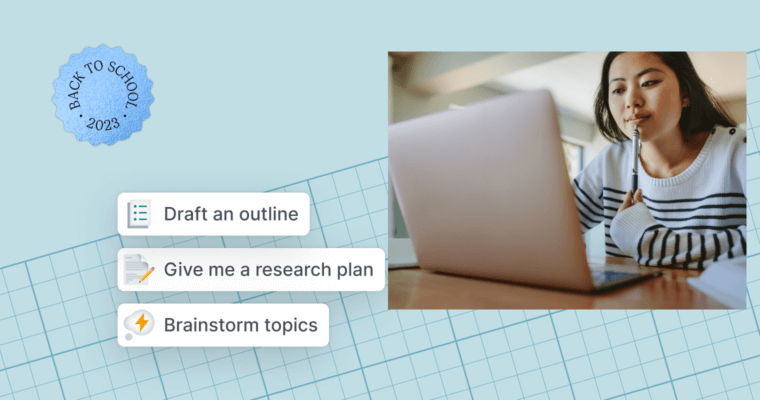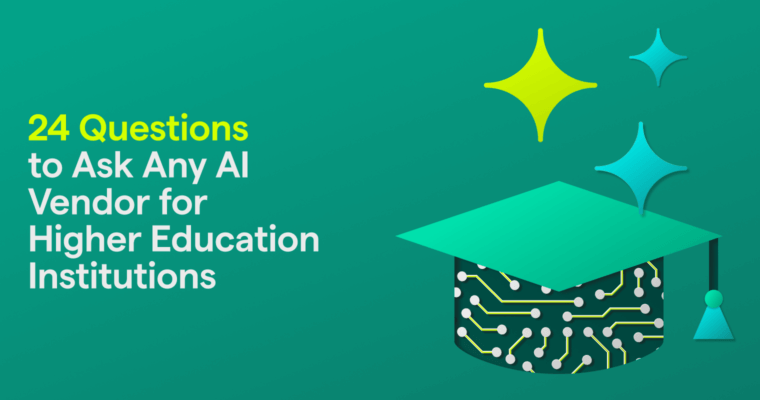
In late August, Grammarly launched a series of generative AI features intended to support students in their responsible and effective use of AI while writing. When enabled by Grammarly for Education institutional admins, these features support students throughout the writing process, from initial assignment comprehension to brainstorming to real-time feedback to revision before submission. But what does this AI-assisted writing look like in practice? How can students ensure that they use generative capabilities to write more efficiently while also leveling up their critical and creative thinking?
This blog post will walk through a single writing assignment on disruptive innovation from the perspective of an undergraduate business major. Each of the videos below is part of the same assignment, split into specific phases of writing that show how students can use Grammarly’s generative writing assistance to create the best possible submission while adhering to course and institution guidelines.
Step 1: Brainstorming a topic
The hardest part of a writing assignment can be getting started. The paralysis that ensues when grappling with what topic to write about, what to research, and how to overcome the fear of the blank page is very real for students and professionals alike. Because Grammarly’s AI assistance is available everywhere a student writes (Google Docs, Microsoft Word, the Grammarly App, and more), students can easily turn to Grammarly’s gen AI for help getting started. In the clip below, the student uses Grammarly to help brainstorm potential topics based on the professor’s assignment parameters on disruptive innovation. Grammarly returns several options that help the student narrow their topic and begin taking notes that will build confidence and momentum in their research process.
Step 2: Building a research plan and outline
Once students have narrowed their topic, researching is the next step. Grammarly helps students understand what research is needed to write a persuasive, informed essay on the selected topic. In the below clip, the student uses Grammarly’s pre-selected prompt, “Give me a research plan” to start building their own outline, then asks Grammarly to “Draft an outline” based on the research plan. The result is that the student is well positioned to research their topic more efficiently than they otherwise would have and can go into their research and drafting phase confidently.
Step 3: Developing a strong thesis statement
Crafting a solid thesis statement to ground a piece of writing is challenging, particularly in an era in which academic writing must showcase personal conviction, experience, and creativity. Grammarly’s research plan and outline help students draft their thesis statements more quickly and can then help students evaluate the strength of their thesis statements using pre-populated prompts. In this clip, the student drafts a thesis on how Uber and Lyft disrupted the taxi industry, then asks Grammarly to “Give me ideas for improvement.” This assistive writing support ensures that the student remains in control of their writing while benefitting from real-time, in-line feedback to level up their writing and ideas.
Step 4: Drafting
Once students have a strong research plan, thesis statement, and outline, they are better positioned to draft an effective essay. In the generative AI era, it can be tempting to outsource that drafting to generative tools, even when professors have explicitly prohibited students from doing so. Grammarly’s generative AI puts up guardrails to prevent students from using it to compose text. In the video below, the student asks Grammarly to write an essay based on his created outline. However, he sees an AI Guideline reminder that redirects him to brainstorming prompts. The intention is to keep students focused on using generative AI to enhance the original thinking in their writing rather than outsource it.
Step 5: Real-time revision and feedback
After students have written their first draft, Grammarly’s revision capabilities help them improve their clarity, delivery, and grammar. With new generative capabilities, Grammarly also acts as a feedback partner to students, giving them constructive, actionable feedback on the quality of their ideas and identifying any gaps in specific parts of their paper.
Step 6: Solidifying the unique point of view
Oftentimes, students may be tempted to submit their assignments as soon as they finish without spending time refining their writing and strengthening their main argument. With Grammarly’s feedback prompts, students can highlight text and ask Grammarly to “suggest counterarguments” that may expose gaps in thinking or help students be more convicted in their main point. The last video below shows a student using Grammarly to zoom out from the details and weigh the strength of their concluding argument. This is a practical, efficient tactic that solidifies student understanding of their topic and argument and helps them extend the value of the assignment to class discussion after submission.
Traditional writing assignments are evolving. Assignments that only assess basic understanding of a topic and don’t require students to apply, analyze, evaluate, and create increasingly lack instructional value. However, generative AI, when used appropriately as a writing assistant and thought partner, can be a valuable tool to push students’ thinking and help struggling writers articulate their ideas more easily.
To learn more about how Grammarly for Education can support your students, contact our sales team.






